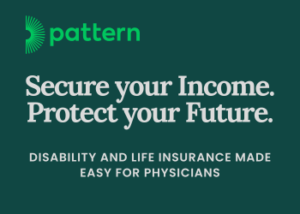by Rima Rudd, ScD
We take the written word for granted.
Signs and billboards are everywhere – offering directional information, alerts, warnings, and advertisements. Streets, public squares, buildings, agencies, and institutions are numbered and named. We are surrounded by the written word in public locations and within public and private institutions. Individual entrances and even elevators in some large buildings carry names. The lobby, the inside hallways, and walls of offices are replete with postings and signs. We are surrounded by the word and adults are expected to use reading, writing, listening, speaking, and math [the full panoply of literacy skills] to locate places and to follow posted and oral directions.
When we analyze commonly found public postings, messages, and signs related to health, we can uncover other assumptions as well. For example, public health campaigns often cite statistics and rely on an understanding of complex mathematical concepts such as risk and probability. However, we rarely explain these words. Many health professionals assume that the average person knows the names, location, and function of various organs and systems of the human body. However, this information is not uniformly part of any curricula in our country’s K-12 state educational requirements. Signs in hospitals often use technical terms [such as pulmonary center] rather than the everyday words that people tend to use [asthma clinic]. Private and public beneficiary programs develop informational booklets and forms that are based on assumptions about people’s familiarity and ease with forms, legal and bureaucratic jargon, and arithmetic calculations. For the most part, these assumptions are faulty.
Expectations and assumptions about average literacy lead to a mismatch between people’s actual skills and health systems’ processes and procedures. This remains surprisingly true even after the publication and widespread dissemination of findings from the U.S. Department of Education’s national adult literacy survey in 1992 and in 2003. Findings indicated that a majority of U.S. adults have difficulty using commonly found print materials to accomplish mundane tasks with accuracy. Furthermore, they provide evidence that a large percentage of adults have difficulty applying basic math skills to everyday activities – such as determining a discount or the correct dosage for over-the-counter medicine.
Before we simply decry the failure of our education system, we must also look in the mirror
A substantial body of medical and public health literature – over 1,000 studies, yields consistent findings that the reading level of health materials far exceeds the reading skills of high school graduates and clearly ignoring the needs of the public for whom they were developed. In its broadest sense, navigating health systems involves myriad activities including all those related to health promotion, health protection, disease prevention and early detection, health care, and engagement in health policy decisions.
These activities involve accessing information and using commonly found tools. The documented mismatch between skills and demands limits access to information and inhibits health related actions. Health literacy research has documented the consequences in terms of added morbidity and mortality. The mismatch may also contribute to damages to community well being.
For now, I bring your attention to something we often take for granted – our work environments and the activities faced by outsiders as they try to navigate health institutions.
I will use a hospital as an example
First, I ask you to pause for a moment to recall the last time you were lost, perhaps even late for a meeting, and to remember the feeling you had. Now, envision coming to a health care facility you’ve not visited before. Before you left home, you likely used the phone or internet to find the location and obtain directions. You likely walked from public transportation or a parking lot to what you assumed was the main entrance. Consider the literacy related activities you engaged in and the skills needed. Consider too, the tools you were given – the voice on the phone, the posting on the web, and the signs to guide your passage.
Navigating to and within any health care facility requires sophisticated literacy skills
People may encounter difficulties using available maps and postings, the unusual words and concepts in use, the requisite intake forms, the presentations of complicated options, and the legal documents needed for consent. Furthermore physical navigation brings added challenges. Anyone unfamiliar with the common parlance of medicine and the traditional groupings of diseases and disorders might not understand the underlying logic in the placement of patient rooms, the groupings of offices or specialty clinics, the floor plans, or the words on signs.
After all, a health center or hospital also serves as a worksite for a variety of professionals – including those in medicine, nursing, pharmacy, laboratory sciences, administration, development and outreach, as well as for the service industry – multiple professionals engaged in critical work. The culture of medicine permeates the buildings and can be seen in the words in written materials, observed in the clothing and uniforms of the various personnel, clearly witnessed in the fast pace of those walking about, and overheard in conversations among those working within.
Consider the signs
Many hospitals have multiple entrances named with signs such as ‘receiving’, ‘admitting’, ‘ambulatory care’, or ‘emergency entrance’. For example, the use of ‘ambulatory’ in place of ‘walk-in’ can easily lead to confusion. After all, ‘ambulatory’ is a relatively rare term these days and might be confused with ‘ambulance’. Once inside, a visitor may well be provided with maps. Some lovely color-coded maps we examined contained colors rarely reflected on the walls or signs. In addition, we found that the destination site as listed on the map sometimes had a different name on the post or door at the destination. How do we decide if we actually arrived? In the lobby and in the hallways of many large institutions, signs resemble multi-layered headlines and the top name is sometimes that of a donor. An average visitor might be forgiven for not being able to differentiate between proper names and medical terms.
Next, consider the entry rituals as well. Generally, people entering a health care facility are expected to fill in forms
Documents [i.e. short forms or graphic displays of information] are more difficult to use than are materials presented in prose format. This is because documents do not use full sentences and paragraphs. A reader, faced with a new word, can often guess at its meaning in the context of a sentence or paragraph. Required forms include those related to insurance, Medicaid or Medicare, as well as family and personal health history. As we well know, these materials also contain specialized language and complex explanations. Challenges exist at the exit points as well. Health care systems also rely on print materials to convey directions and instructions related to test results, medicines, side effects, procedures, and follow-up or self-care.
But attention to the written word does not entirely capture the literacy related difficulties in health settings. Medical, nursing, dental, pharmacy, and mental health encounters rely on the oral exchange – the listening and speaking skills of both patients and health practitioners.
Patients are expected to find the words to describe feelings, experiences, and needs. They are also expected to follow the talk of professionals. While the literacy skills of patients are of critical importance, so too are the communication skills of clinicians.
We must identify and analyze the literacy related barriers and faulty assumptions ‘built-in’ to the structure and activities of health and health care environments. We must consider what we can do to make the patient or visitor’s journey less arduous.
As a start, you might be interested in a closer look at your own facility. You can download and use the Health Literacy Activity Packet: First Impressions and a Walking Interview available on line at my Health Literacy Web Site. This packet contains short forms for assessing the web, the phone, the walk to the facility, and directions for a walking interview with someone new to your facility.
The approach is designed to help us see our workplace though the eyes of visitors. These simple processes will help you identify some barriers and begin to consider how you might remove them. For a more detailed examination, look at a tool for examining the health literacy environment of hospitals and health centers, also available on line. In addition, DeWalt and colleagues rigorously piloted a health literacy tool kit designed for smaller clinical practices. The tool kit is currently under study and is available on line from the Agency for Healthcare Research and Quality.
Health literacy research has provided us with a great deal of insight about the powerful links between literacy and health outcomes. In our early inquiries we paid a good deal of attention to measuring the skills of patients and to examining health outcomes related to these skills. Now, we must begin to turn our attention to our own skills and to the barriers that are embedded in our communications, our expectations, our processes, and our facilities.
Rima Rudd is Director of Educational Programs, Society, Human Development, and Health, Harvard School Of Public Health and blogs at Engaging The Patient.com.
Submit a post and be heard on social media’s leading physician voice.

















![A new approach to South Asian heart health [PODCAST]](https://kevinmd.com/wp-content/uploads/Design-3-190x100.jpg)


